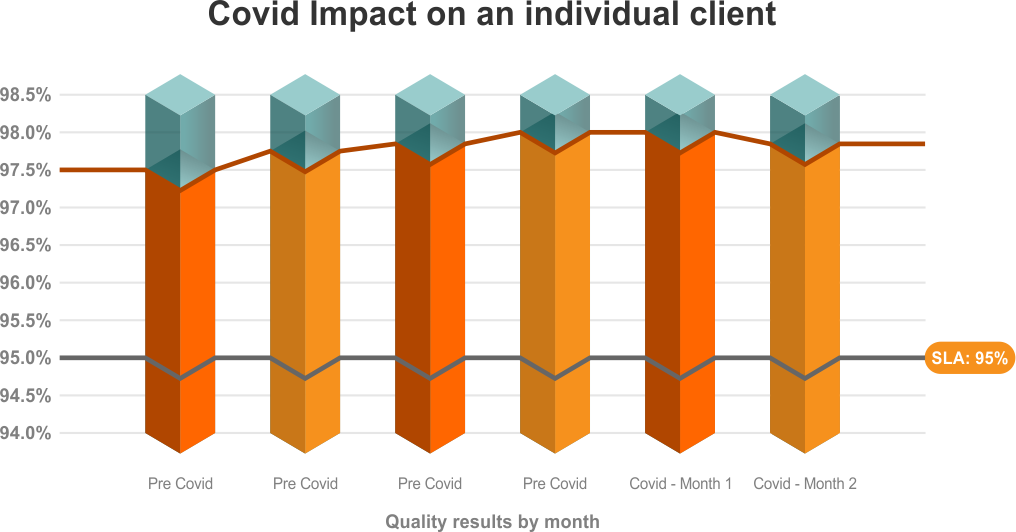In a pre-COVID-19 world, Business Continuity Planning ("BCP") for many companies consisted of getting ready for a power outage or a natural disaster that could shut down a facility for hours or a few days at best. The COVID pandemic made many companies aware they needed to plan for potentially long-term interruptions.
Pandemic planning is not like other business disruptors such as natural disasters, social unrest, or cybersecurity attacks which generally are short-term, localized events. Interruptions caused by a pandemic are longer in duration and global in scale.
Benefits of pandemic planning:
The first step of any BCP is to have a Crisis Management Team assembled and ready to mobilize. This team should be multi-disciplinary and consist of members from all critical areas, including without limitation: IT, HR, Finance, Operations, Sales, Facilities, Legal, and Marketing.
The mission of the Crisis Management Team is to review dynamic situations and adapt the plan to current conditions while maintaining a strategic view of the objectives. They are also responsible for communicating updates and instructions to their teams, suppliers, and customers.
In a pandemic situation, it is critical to manage your resources in an effective and efficient manner. One approach involves three elements: prioritize, delay, and defer.
Prioritize mission-critical functions, required to keep operations running and support your customers and patients. Delay noncritical functions, which are the activities that are important but not critical to be done right now, such as administrative activities, e.g., employee annual reviews.
Finally, you will want to defer non-essential tasks which include non-essential training.
Make sure you review the critical parts of your operation. Where do you derive your inputs, such as raw materials or telecommunications? Maintain an up-to-date understanding of the operations and business continuity plans of your critical suppliers and any applicable contractual exclusions or circumstances that may excuse performance.
Utilize multiple disparate vendors to limit the impact of a single source solution. Require your critical suppliers to undergo ISO and SSAE-18 certifications to give you confidence that their procedures are adequate.
It has become cliché, but the phrase "communication is key" holds true. Keep your employees, vendors, suppliers, customers, and patients up to date on applicable changes in operations. Establish a communication cadence to provide ongoing, succinct updates.
Conditions change rapidly in a pandemic situation and you need to have a communication protocol to deliver information to all relevant stakeholders.
Do not underestimate the importance of your most critical assets – your employees. In a pandemic, your employees will also be impacted. They may have challenges with transitioning to a home office or caring for young children and/or sick family members.
Be cognizant of these unique challenges and provide the support needed to help them transition into the new work environment such as flexible work hours or internet bandwidth upgrades.
Annual forecasts may need to be adjusted. Key employees, board members, and investors must be apprised of changing forecasts and the specific circumstances that are causing such adjustments. You may find the key demographic you serve is severely impacted, resulting in a corresponding downward adjustment Alternatively, you might have an essential product or service which may result in an upward adjustment.
Weekly reviews (and daily reviews in some instances) with the key stakeholders may be necessary.
Situations are dynamic and can change quickly during a pandemic. Provide an internal feedback loop between your Crisis Management Team and key management to keep them apprised of the changing conditions. Be flexible to changing directions as conditions evolve.
If working from home for employees is part of your plan, make sure you have addressed the following:
Determine what your new work environment will look like and develop a plan to implement it. Some things to consider:
Let us look at how Vee Healthtek handled a pandemic situation.
In early 2020, Vee Healthtek was forced to enact it BCP due to the COVID-19 pandemic. While the BCP had been activated in the past for localized issues, this was the first live test during a pandemic situation. The first step was to convene the Crisis Management Team. This team reviewed the then-current conditions and determined that the severity levels differed by location. They then quickly moved groups of employees out of some of the “hot zones” to facilities in other cities with better conditions. The company already had housing in place for employees, as this was part of their regular site specific BCP.
When shelter-in-place orders were issued by the local governments, Vee Healthtek enabled its work from home plan. This plan included many coordinated steps, including obtaining any required consent from clients. Once approvals were obtained, the task of moving equipment began. Employees were able to sign out a laptop or desktop for use in the home environment. Equipment was delivered to those employees without the ability to transport the equipment. Admirably, many employees volunteered to help with such deliveries.
For staff without sufficient internet bandwidth options, high-speed hot spots were delivered to enable productivity. Our "Compliance Node," which is a secure HIPAA compliant connection into our network, was activated. Upon security validation, employees can then access customers’ systems. Security and compliance were always the top priority in the design of the solution.
Over a short period of time, Vee Healthtek was able to transition 98% of its staff to a secure work from home environment. The new work environment had minimal impact on production and SLA’s were still maintained as shown in the chart below:

Advanced planning and preparation are keys to successful business continuity during a pandemic. Utilize the Crisis Management Team to coordinate with employees, suppliers, and clients.
Following a well-designed plan will minimize the impact on staff, supply chain, operational delivery, finances, and reputation. It will also allow you to return to (a new) normal sooner.